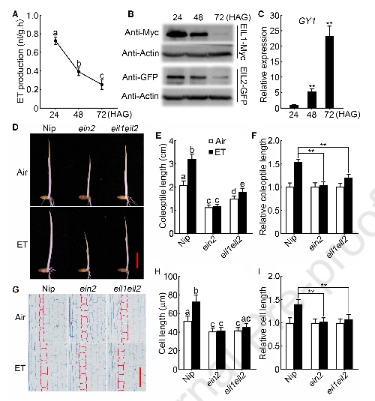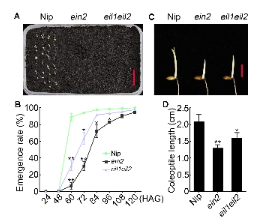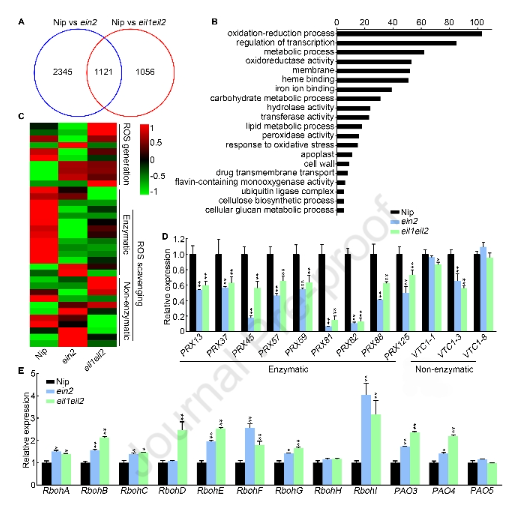Abstract:
Successful emergence from the soil is a prerequisite for the survival of seed plants in naturaenvironment. In rice, coleoptile elongation facilitates seedling emergence and establishment,andethylene plays an important role in this process. However, the regulatory mechanism underlyingremains largely unclear, Here, we report that ethylene promotes cell elongation and inhibits cellexpansion in rice coleoptiles, resulting in longer and thinner coleoptile to facilitate seedlingemergence from the soil. Transcriptome analysis showed that genes related to reactive oxygenspecies (ROS) generation were up-regulated and genes involved in ROS scavenging weredown-regulated in the coleoptile of ethylene signaling mutants. Further investigations showed thatsoil coverage promotes the accumulation of ETHYLENE INSENSITIVE 3-LIKE 1(OsEIL1) andOsEIL2 in the upper region of coleoptile, and both OsEIL1 and OsElL2 could directly bind to thepromoters of GDP-mannose pyrophosphorylase (VTCl) OsVTCI-3, peroxidase (PRX) genesOsPRX37, OsPRX81,OsPRX82, and OsPRX88 to activate their expression, leading to increasedascorbic acid (AsA) content and peroxidase activity and decreased ROS accumulation in the upperregion of coleoptile. Disrupting ROS accumulation promotes coleoptile growth and seedlingemergence from soil. Thus, our findings deepen our understanding of the role of ethylene andROS in controlling coleoptile growth, and this knowledge can be used by breeders to cultivate ricevarieties suitable for direct-seeding.
Key Words:
ethylene, ROS, coleoptile growth, emergence rate, rice





